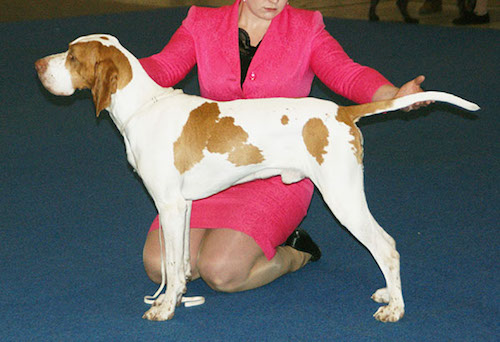
Few breeds have their ears described as “scrolled,” but in some quarters, that is how the “leather” of the Braque de l’Ariège’s ears is described. Recognized as the Ariège Pointing Dog by the FCI, the breed standard for this largest of the French pointers describes the ears as quite fine, long, and “curled in.” They are ideally set at eye level or below, and while quite long and floppy, they’re not carried close to the head. The hair found on the ears is much finer and smoother than the hair on the rest of the dog, making them, we suppose, irresistible to petting.
A hunting dog, however, does not hunt on his ears, important as they are. The Ariège is a natural hunter capable of working long hours in very difficult terrain and technically, it’s an HPR, or hunt, point retrieve breed. A few dogs have done extremely well in open field trials against better known breeds, remarkable because there aren’t many Braques around in a breed that’s uncommon even in its native France. The working standard calls for a sustained gallop with intermittent trotting, but being able to cover ground at a pace that can be sustained during a day full of hunting is preferred over speed. Not a great choice for water work (though a well trained Ariège can retrieve from water), the Ariège is nevertheless a strong retriever and solid pointer. The bigger issue facing someone wanting an Ariège Pointer is finding one. In 2007, only 52 puppies were whelped, and that was the largest number since the parent club, the Club du Braque de l’Ariège, was formed in 1989. The club’s goal is to eventually produce around 100 puppies a year from the dozen or so breeders that exist in France. Though the breed is rare in the United States, it’s been recognized by the United Kennel Club since 2006.
A marvelous overview of the breed is found in Craig Koshyk’s book, Pointing Dogs: The Continentals.
Image: By Canarian – Own work, CC BY-SA 4.0, https://commons.wikimedia.org/w/index.php?curid=539815238
